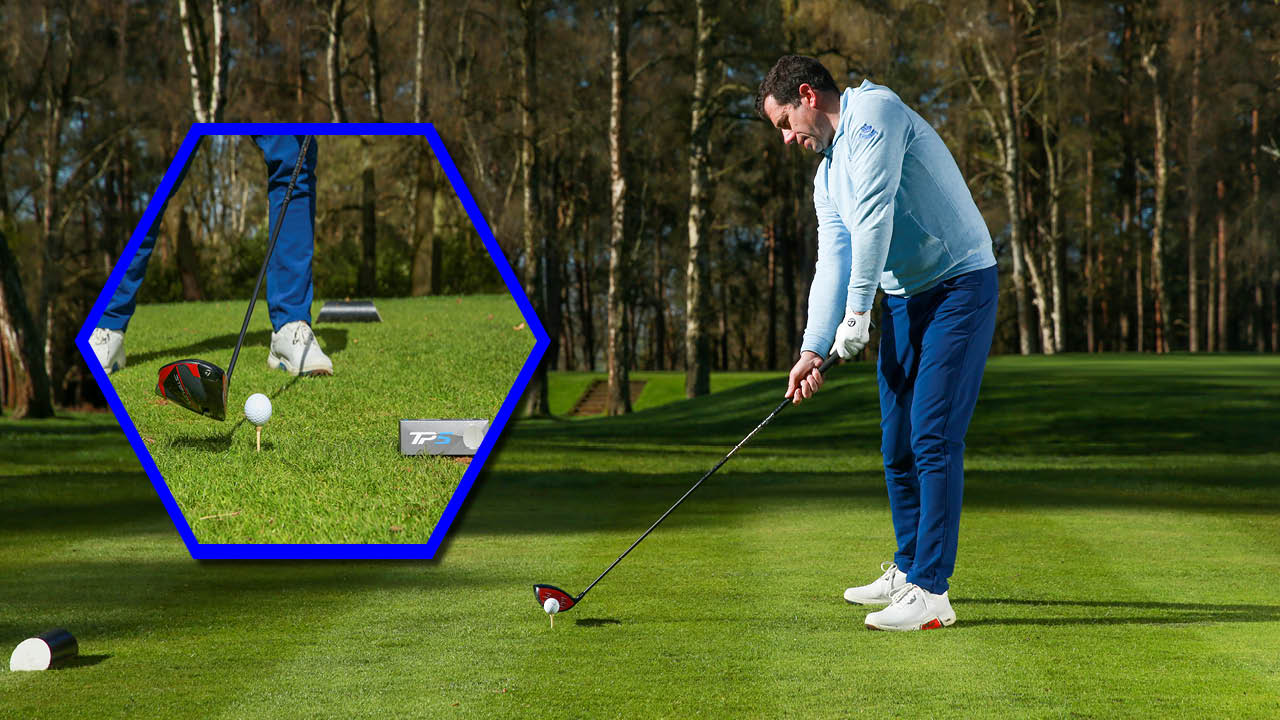How To Avoid Creating Too Much Spin With Your Driver
Golf Monthly Top 50 Coach Dan Grieve demonstrates how to avoid creating too much spin with your driver


Golf Monthly created this content as part of a paid partnership with TaylorMade. The contents of this article are entirely independent and solely reflect the editorial opinion of Golf Monthly.
Many of us will have been in a situation where we aren't driving the ball as well as we'd like, perhaps due to us not getting the optimal launch angle or our driver address position is slightly off.
Often, however, faults with our driving can be linked to creating too much spin. We all want to maximise our power and distance off the tee, but that comes with certain risks, so we asked Golf Monthly Top 50 Coach Dan Grieve to share some tips on managing spin with the driver...

Dan Grieve is a Golf Monthly Top 50 Coach and PGA Professional who works with golfers of all abilities at Woburn Golf Club. He has coached some of the biggest stars in the game including Charley Hull and Major Champion, Georgia Hall. Dan has helped so many amateur golfers with their driver faults, and is an asset that you should utilise in your quest for longer, straighter tee shots.
How To Avoid Creating Too Much Spin With Your Driver
We’ve all hit one of those drives where the ball stalls in the air and seems to just fall out of the sky – and it’s not always because we’re playing into a headwind. Often it’s simply down to putting too much spin on the driver. You might not even know it's happening, but you will be pleased to know that hitting longer drives can be easy.
One of the reasons for excessive spin is teeing the ball too low. Lots of amateurs tee the ball too high, too – which can cause its own set of problems – but when it sits beneath the crown, it encourages you to hit down. If you were to look at your launch monitor data, you might see your angle of attack at two, three, four or even as much as five degrees down.

Teeing the ball at the correct height can be a quick fix to your driver issues
In order to maximise your distance off the tee, it's important to consider how high to tee up a driver. Ideally, you want to see around half of the ball above the edge of your driver. Just by doing this, you’ll instinctively create the optimal driver launch angle more consistently - which should be on the up. This simple adjustment will also allow your shoulders to sit correctly with the right shoulder (for a right-handed golfer) sitting nice and low at address.
As you become accustomed to how high you should tee the golf ball, you can start to use drills to develop the correct driver set-up. This will help you hit longer drives that instead of stalling mid-flight, roll out nicely on the fairway for some bonus extra yards.
Subscribe to the Golf Monthly newsletter to stay up to date with all the latest tour news, equipment news, reviews, head-to-heads and buyer’s guides from our team of experienced experts.

Set-up this drill with a sleeve of balls and test whether you are creating the right attack angle with your driver
Simply, place an empty sleeve of golf balls about a foot in front of your ball. Start hitting drives, and don't worry, you’re not going to do any damage if you hit the sleeve. If you do clatter into the packaging, and you’re consistently snapping your wooden tees, that’s a sign that maybe your ball is teed up too low and/or you have a descending angle of attack.
As I said earlier, you are looking for an angle of between two and five degrees on the up - so a fractionally ascending blow. The correct attack angle will help you to strike the ball better and you will notice the club passing over the empty sleeve without making contact. As an added bonus, you will also probably break fewer tees.
Dan Grieve's Driver Spin Checklist
1) Make sure you have the ball teed at the correct height - around half of the ball above the driver
2) Set-up with your right shoulder low at address
3) Use drills to practice producing the optimal launch angle with your driver

Location: Woburn GC
Dan is one of the leading coaches in the UK, a Fellow of the PGA and a short-game virtuoso. He has had considerable success with a collection of tour pros, helping them to Order of Merit titles and major victories, and his Short Game School is the most attended in the UK. His students, past and present, include Charley Hull, Georgia Hall, Inci Mehmet and Iona Stephen.
Most common problem:
Swing – over the top , help by getting the basics correct at address and making them aware how to get the club online coming down.
Short game – creating spin and feel around the greens, help by educating on what the short game actually is (weak on purpose) and understand bounce and how they can apply it to different lies/situations.
Greatest success story:
Helping Georgia Hall from World No. 450 to No. 6 and winning a Major, two Order of Merits and Solheim Cup appearances.
Greatest teacher:
Alex Hay was a great influence during my first few years at Woburn. In sport more generally Sir Clive Woodward has taught me how to deliver at the highest level.
Most common fault:
Flipped right hand (hands behind the ball). Understand a correct coil/load going back and how to sequence better coming down so the chest opens up and gives the arms space to deliver a stronger impact. Lots of body action drills to enhance the feel, with and without the ball.